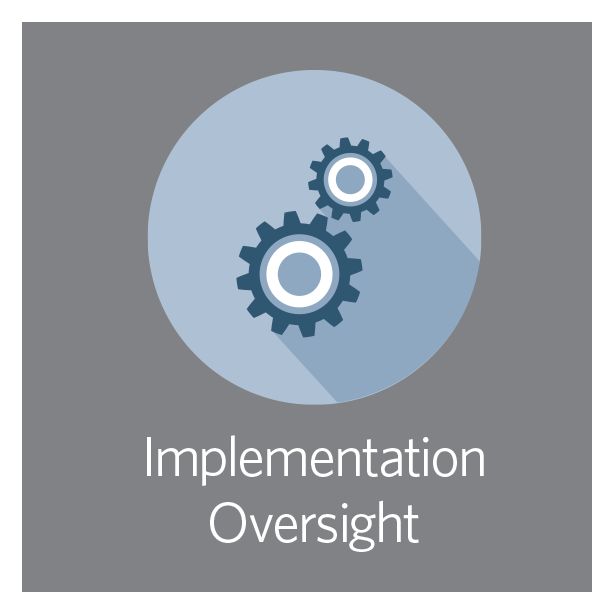Los Angeles County Provides Strong Oversight of Mental Health Programs
Training, implementation monitored to ensure evidence-based services achieve results
After California lawmakers passed legislation in 2004 to expand access to community mental health services, officials in Los Angeles County knew they had to ensure that their programs were effective to take full advantage of possible new resources—and to best serve their communities.
The California Mental Health Services Act (Proposition 63) offered funding and other resources to support county mental health programs across the state. To help counties detect mental illness early and prevent it from escalating, the law required them to dedicate 20 percent of funds received under the act to prevention and early intervention (PEI) services that have been proved effective.
Los Angeles County used the money to provide new programs for previously unserved or underserved clients. To ensure effective delivery of those services and positive client outcomes, the Department of Mental Health also created an oversight system to help staff identify effective programs, monitor program delivery, and address implementation challenges.
That system provides:
- Program selection guidance. Community-based organizations and directly operated county programs that receive PEI funding must select from an approved list of evidence-based and promising programs that address specific mental health service needs. The department chose programs for the list from reputable evidence-based practice websites, such as the California Evidence-Based Clearinghouse for Child Welfare, and among local submissions from community-defined evidence practices. The programs included met specific criteria, such as a level of demonstrated effectiveness and an ability to be replicated.
- Training guidelines. The guidelines define and standardize protocols—such as certification requirements—to help providers improve service delivery and client outcomes. To be eligible, providers must comply with minimum training standards, which are updated annually. County staff known as practice leads are available to help address implementation questions and challenges for each PEI service.
- Implementation oversight. The department monitors implementation through site visits and analyses of PEI claims. Staff visit the sites about every two years to review and discuss program and individual-level data and quality improvement plans. The department regularly reviews claims analyses and shares findings with providers.
This process helps to ensure effective program delivery as the department works with providers to sustain and improve PEI practices, and to give targeted technical assistance where needed.
Keri Pesanti, a clinical psychologist and program head overseeing the county’s PEI administration, emphasized the need to keep a constant watch on program implementation. “There are programs we thought were going to thrive, but we experienced more struggles with them than we expected,” she said. “This monitoring process has helped us make better decisions about where we invest in training to improve program delivery.”
Pesanti said the Department of Mental Health identified several key strategies for effective implementation and oversight, including:
- Setting clear expectations. The department specifies training requirements, implementation details, and claims processes in handbooks and other resources. Documented protocols ensure that all PEI programs are implemented with consistency across the county.
- Helping providers meet high standards with support and training.The department designates a staff contact for each PEI program to answer questions about topics such as training requirements and implementation processes. This support creates communication channels that allow administrators, providers, and technical assistance staff to address unanticipated implementation issues as they arise.
- Monitoring programs and assisting providers who need additional support.Department leaders know that providers have different levels of capacity to provide needed services. The implementation monitoring process helps to detect delivery challenges in a timely manner and prioritize limited resources strategically—for example, to the most needed training or discussions.
This oversight system enables the department to be a good steward of taxpayer dollars and to provide effective help to the community. “It also builds our relationships with our provider network, allows us to do our job better, and providers to do theirs better,” Pesanti said. “This process is about improving program delivery and client outcomes with levels of accountability in a structured and supportive framework.”
For more information:
- Los Angeles County Department of Mental Health, “Prevention and Early Intervention Implementation Handbook” (revised 2016), http://file.lacounty.gov/SDSInter/dmh/247145_PEIImplementationHandbook-PDFforWebsiterev.7-27-16.pdf.
- Los Angeles County Department of Mental Health, “Training Protocols for Prevention and Early Intervention Practices” (revised 2016), http://file.lacounty.gov/SDSInter/dmh/201947_PEITrainingProtocolsrevised4-1-16.pdf.
- Los Angeles County Department of Mental Health, “Prevention and Early Intervention: Evidence-Based Practices, Promising Practices, and Community-Defined Evidence Practices—Resource Guide 2.0” (2011), http://file.lacounty.gov/SDSInter/dmh/159575_EBPPPCDEResourceGuide2_0.pdf.
- J. Scott Ashwood et al., “Evaluation of the Mental Health Services Act in Los Angeles County: Implementation and Outcomes for Key Programs,” Rand Corp. (2018), https://www.rand.org/pubs/research_reports/RR2327.html.
Sara Dube is a director and Priya Singh is a senior associate with the Pew-MacArthur Results First Initiative.









